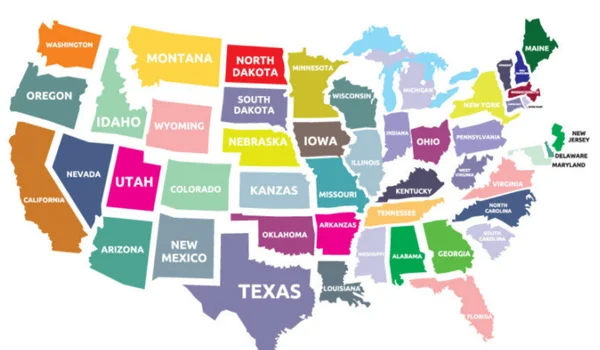
Starting a business in the USA is a dream for many aspiring entrepreneurs — and for good reason. The country offers a thriving economy, vast customer base, and a supportive environment for innovation and growth. But before you dive in, it’s important to understand the legal, financial, and operational steps involved. This step-by-step guide will walk you through everything — from validating your business idea to registering your company, managing finances, and launching successfully — so you can start your American business journey with confidence.
Validate your idea
Before registering anything, you need to make sure your business idea has a market. According to the U.S. Small Business Administration (SBA), conducting market research is a critical first step.
Key questions to answer:
- Who are your potential customers?
- What problem are you solving (or what need are you meeting)?
- How many competitors exist and how are they performing?
- How much are customers willing to pay?
- What makes your offering different?
Tip: Use publicly-available data (surveys, industry reports) and if possible talk to potential customers directly (interviews, small focus groups) to validate demand.
Write a business plan

Once you believe your idea has potential, the next step is to draft a business plan. It doesn’t have to be overly complex, but it should clearly map out how your business will work, how you’ll make money, and how you’ll grow.
Here’s what a good business plan typically covers:
- Executive Summary: What the business is, the vision.
- Market Analysis: Who your customers are, competitor landscape.
- Product/Service Description: What you sell, how it’s made/delivered.
- Business Model & Revenue Streams: How you make money.
- Marketing & Sales Plan: How you’ll reach and keep customers.
- Operations & Team: How the business will be run.
- Financial Projections & Funding Needs: Estimate revenues, costs, profit.
Why it matters:
- If you need funding (loan, investor, etc), they’ll want to see it.
- It forces you to think clearly about your business in advance.
- It helps you track progress and adjust as you go.
Decide on your business structure (legal entity)
Choosing the right legal structure is very important because it affects your liability, taxes, paperwork and how you can raise money.
Common structures in the U.S.:
- Sole Proprietorship
- Partnership
- Limited Liability Company (LLC)
- Corporation (C-Corp / S-Corp)
Things to consider when choosing:
- Liability protection (how much personal risk you accept).
- Taxation (how profits get taxed, personal vs business).
- Administrative burden (filings, state checks).
- Future growth and investment possibilities.
Tip: If you’re unsure, consider starting as an LLC (which is simple yet gives liability protection) and consult with a tax or business advisor.
Choose a business name and register it
Your business name is your brand’s first impression—so pick wisely and then make it official.
Steps:
- Brainstorm names that reflect your business and are memorable.
- Check your state’s business name database to ensure the name is available.
- Check for trademark conflicts (via United States Patent and Trademark Office).
- Register the name (or the entity) with your state’s business filing agency.
- Reserve domain names and social media handles if you plan an online presence.
Register your business & get required IDs
Once your structure and name are set, you’ll need to make your business official by registering it and obtaining necessary IDs.
Key items:
- Register your business entity (LLC, Corp, etc) with the state.
- Get your Federal Employer Identification Number (EIN) from the Internal Revenue Service (IRS) — even if you don’t have employees, often useful.
- Register for any state tax IDs (sales tax, employment tax) as required by your location and business type.
Open a business bank account & set up accounting
Keeping your business finances separate from your personal finances is absolutely critical.
Why:
- Helps maintain liability protection (especially for LLCs/Corps).
- Makes bookkeeping, taxes and tracking much easier.
- Projects professionalism to vendors, customers and partners.
What to do:
- Choose a bank that offers favourable business checking account terms.
- Set up bookkeeping/accounting software (or hire a bookkeeper) right away.
- Track every expense and revenue, and keep good records.
Obtain permits, licenses & insurance
Depending on your industry, location and business structure, you may need various licenses, permits, inspections and insurance.
Examples:
- Local business license from city or county.
- State-level professional licenses (e.g., cosmetology, food service).
- Zoning permits (if you’re operating from a physical location).
- Health & safety inspections (restaurants, gyms, etc).
- Business insurance (liability insurance, property insurance, workers’ comp if you have employees).
Tip: Check with your city/county government and state’s business portal to find the specific requirements for your business type.
Fund your business & manage finances
You may need capital to get started (equipment, inventory, marketing, staff). There are various ways to fund a business.
Funding sources can include:
- Personal savings or bootstrapping.
- Small business loans or lines of credit.
- Investors or partners.
- Grants (sometimes available for certain industries or demographics).
Budgeting matters:
Build a realistic budget. Estimate your startup costs, monthly recurring costs, break-even point and cash flow needs.
Set up your marketing & sales strategy
No matter how great your product or service is, you’ll need a plan to get the word out and convert customers.
Key components:
- Define your target audience (who they are, what they need, where they are).
- Build your brand identity (logo, website, social channels).
- Choose marketing channels (online ads, content marketing, social media, local advertising).
- Set up sales tools (payment processing, invoicing, follow-up systems).
- Plan how you’ll measure metrics (customer acquisition cost, revenue per customer, retention).
Launch operations & monitor growth
With your business legally established, financed, marketed and ready — it’s time to open the doors (physically or virtually) and begin operations. Then keep tracking performance, adjusting as needed.
What to keep in mind:
- Monitor key metrics: sales, expenses, cash flow, profitability.
- Set up systems for customer service, quality control, inventory/fulfilment (if applicable).
- Be ready to pivot: if something isn’t working (marketing channel, product feature), refine it.
- Build a culture of continuous improvement and responsiveness to customer feedback.
- Stay compliant: file taxes, renew licenses, maintain required records.
Step-by-Step Quick Checklist
| Step | Action | Why It Matters |
| 1 | Validate idea | Ensures you’re solving a real problem & reduces risk |
| 2 | Write business plan | Provides roadmap, helps with funding & clarity |
| 3 | Choose structure | Impacts liability, taxes, growth options |
| 4 | Pick & register name | Protects your brand and makes it official |
| 5 | Register business & get IDs | Legitimises business; required for tax & banking |
| 6 | Open bank account & set up accounting | Separates business/personal finances; tracks money |
| 7 | Get licences/permits & insurance | Keeps you legal and protected |
| 8 | Fund business & set finances | Ensures you have the working capital to operate |
| 9 | Develop marketing & sales strategy | Gets you customers and drives revenue |
| 10 | Launch and monitor growth | Operate smartly and adjust based on real data |
Additional Considerations for Non-US Residents or International Entrepreneurs
- If you are overseas and want to start a business in the U.S., there may be visa or investment-immigration rules you’ll have to consider (e.g., investor visas).
- Be aware of cross-border tax and legal issues (consult a U.S. business lawyer or tax advisor).
- Choose a state that is friendly for business operations (costs, regulations, taxes differ significantly by state).
Frequently Asked Questions (FAQs)
1. What is the first step to start a business in the USA?
The first step is to validate your business idea. Research the market, understand your target audience, and identify what makes your product or service unique before investing time or money.
2. Do I need a visa to start a business in the USA as a foreigner?
Yes, if you are not a U.S. citizen or permanent resident, you’ll need a business or investor visa (like an E-2, L-1, or EB-5 visa) to legally operate a business in the USA. Consult an immigration attorney to choose the right option.
3. How much does it cost to start a small business in the USA?
Startup costs vary widely depending on your business type and location. On average, small businesses spend between $5,000 to $25,000 initially, including registration fees, licenses, and setup costs.
4. How long does it take to register a business in the USA?
In most states, registering a business like an LLC or corporation can take 1 to 2 weeks, depending on state processing times and whether you file online or by mail.
5. Do I need a business license to operate?
Yes, most businesses require at least one license or permit to operate legally. Requirements depend on your state, city, and industry, so it’s important to check local and federal regulations before launching.
Final Thoughts
Starting a business in the USA can be very rewarding — but it requires planning, legal compliance, financial control and ongoing effort. Each step is important; skipping or rushing may lead to problems later (legal trouble, cash-flow issues, missed opportunities).
If you approach it methodically—validating your idea, writing a strong plan, choosing the right structure, registering properly, financing smartly, marketing effectively and monitoring continuously—you give yourself the best chance of success.


